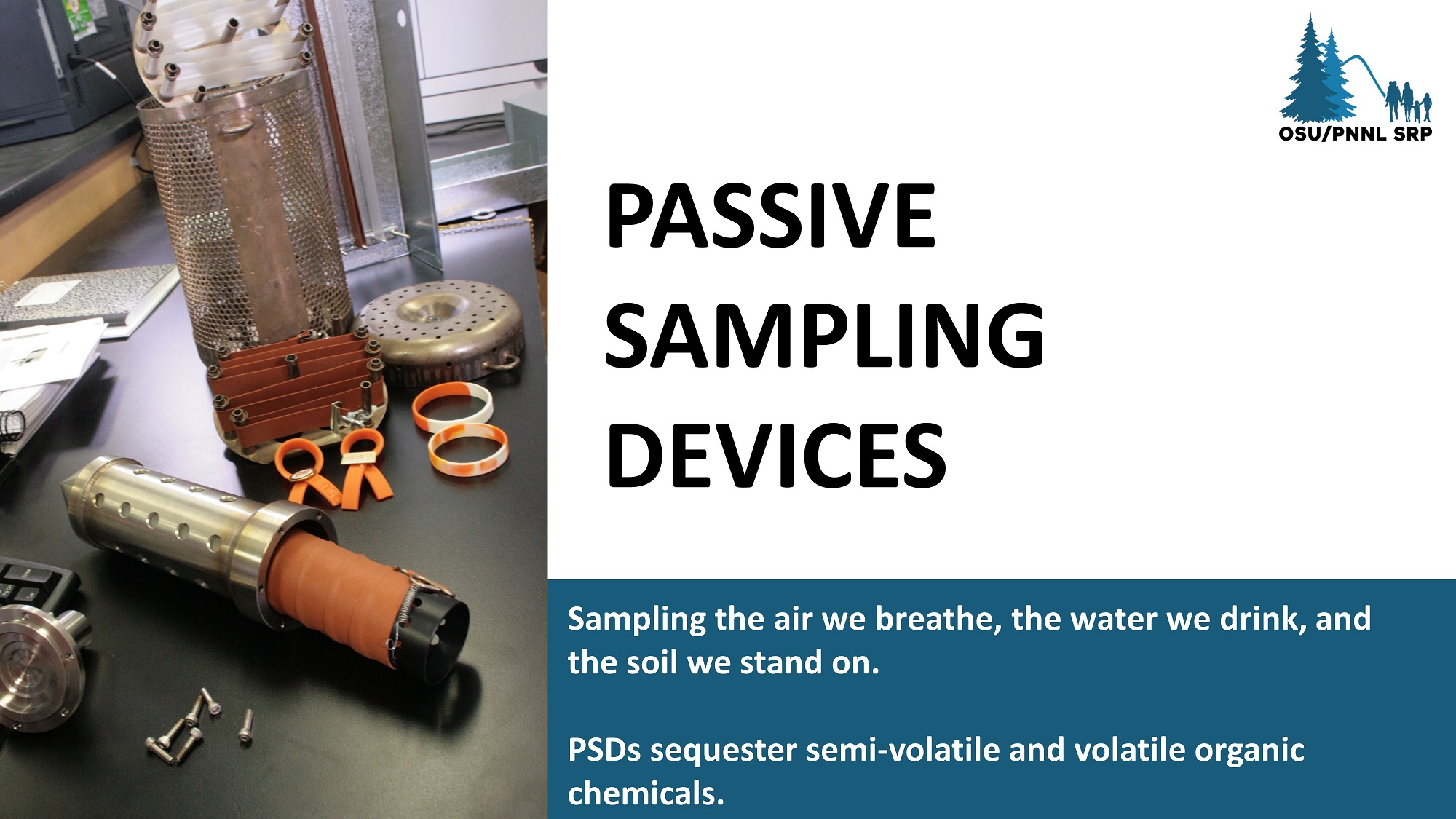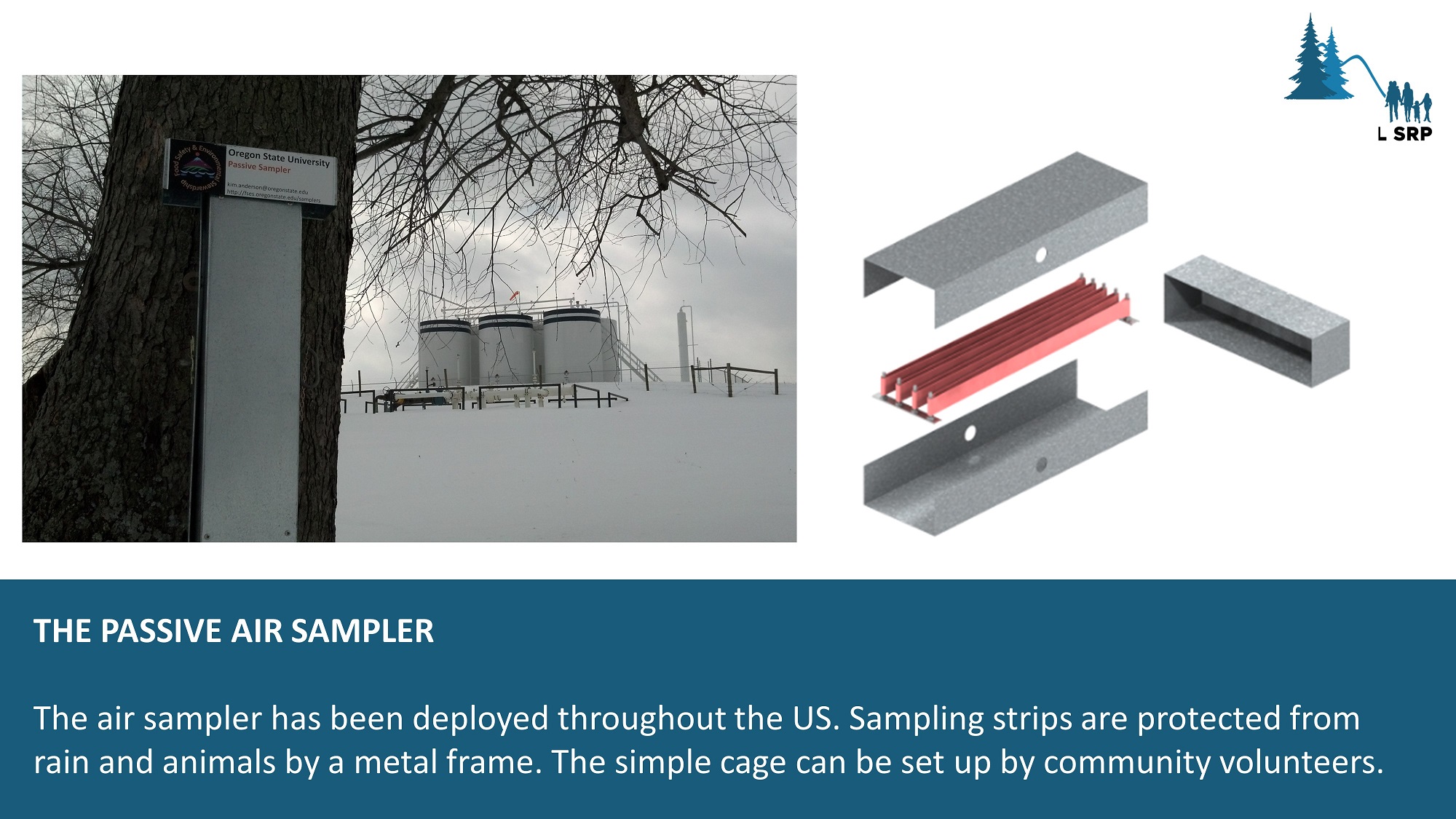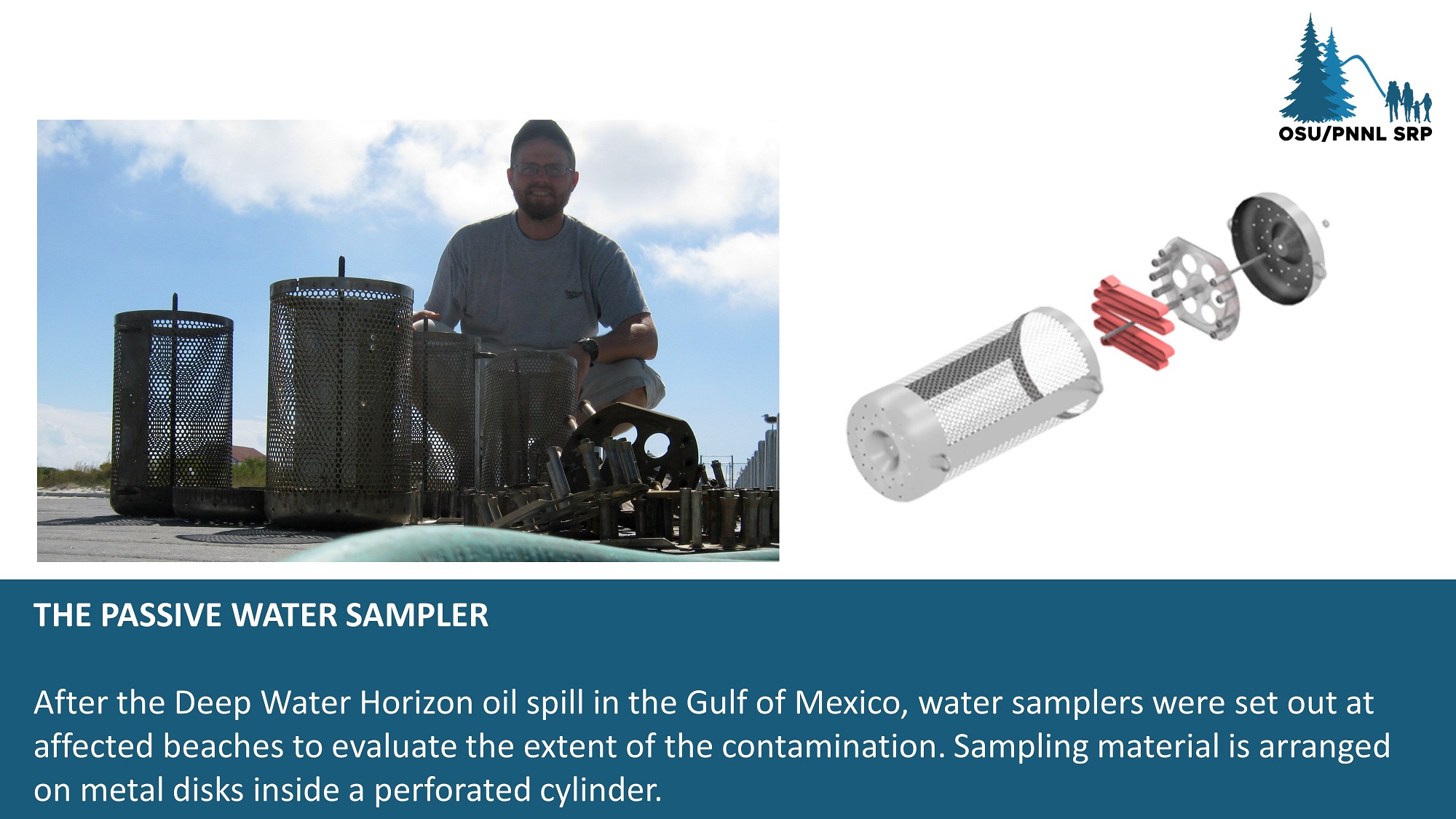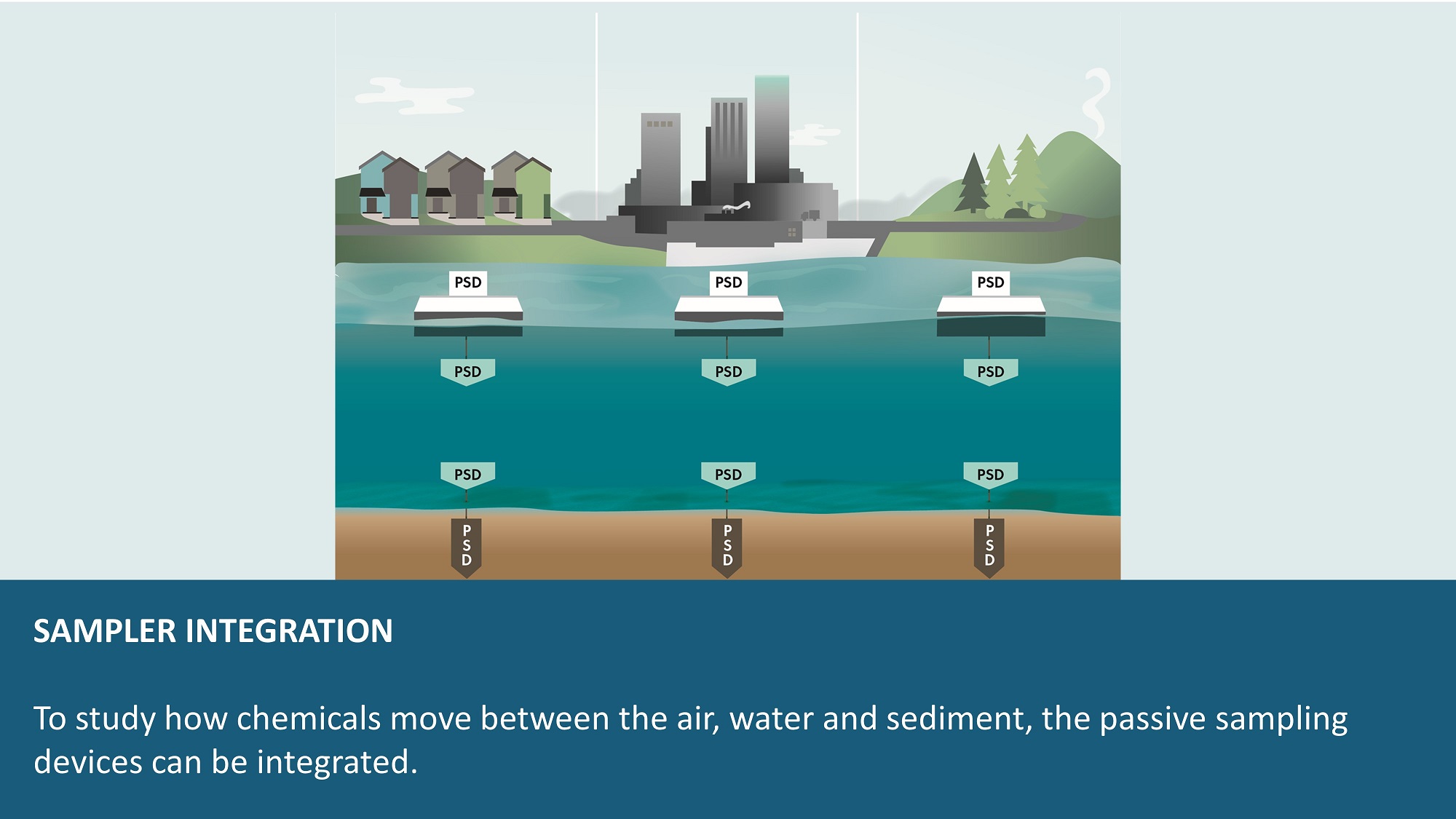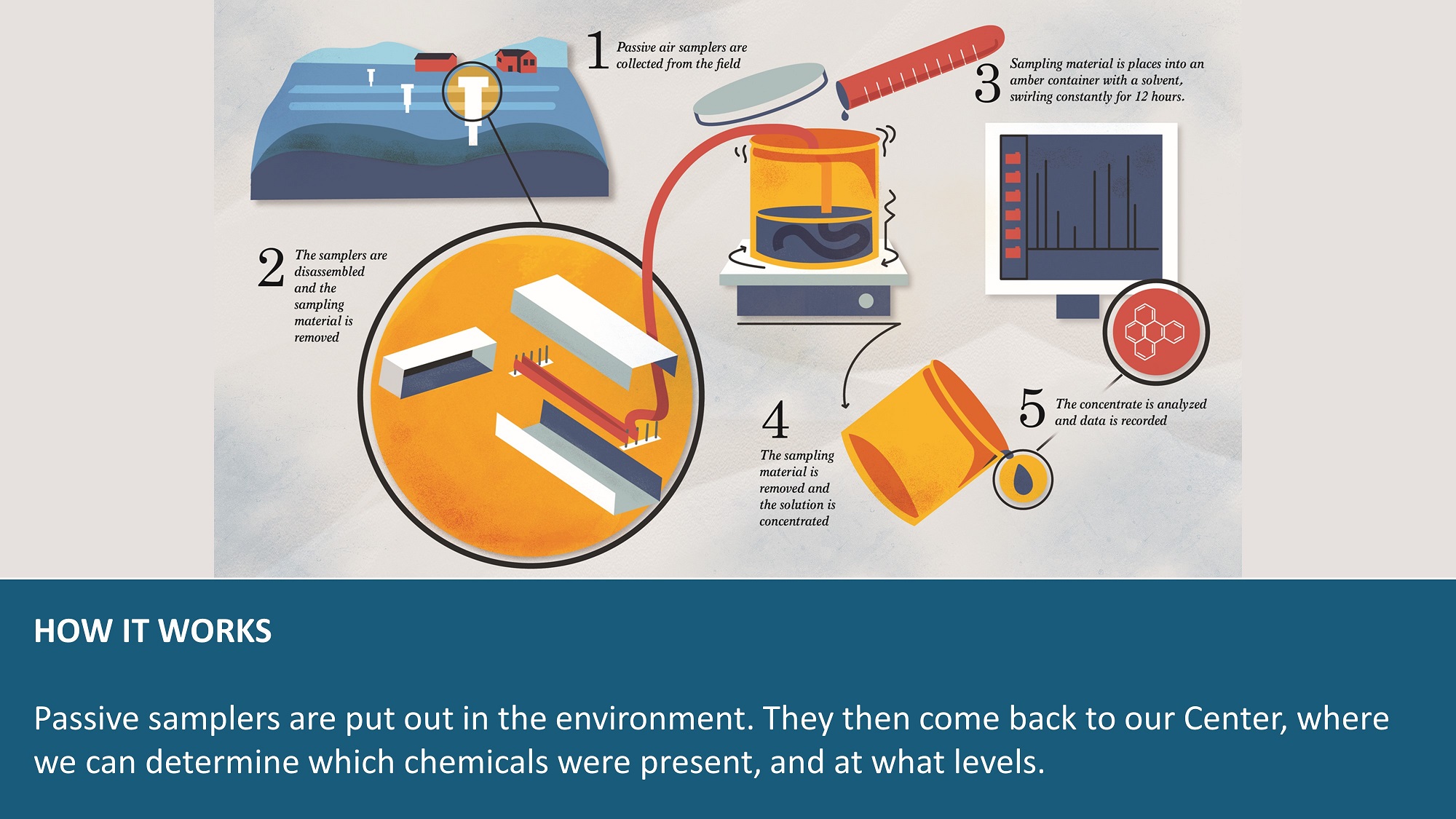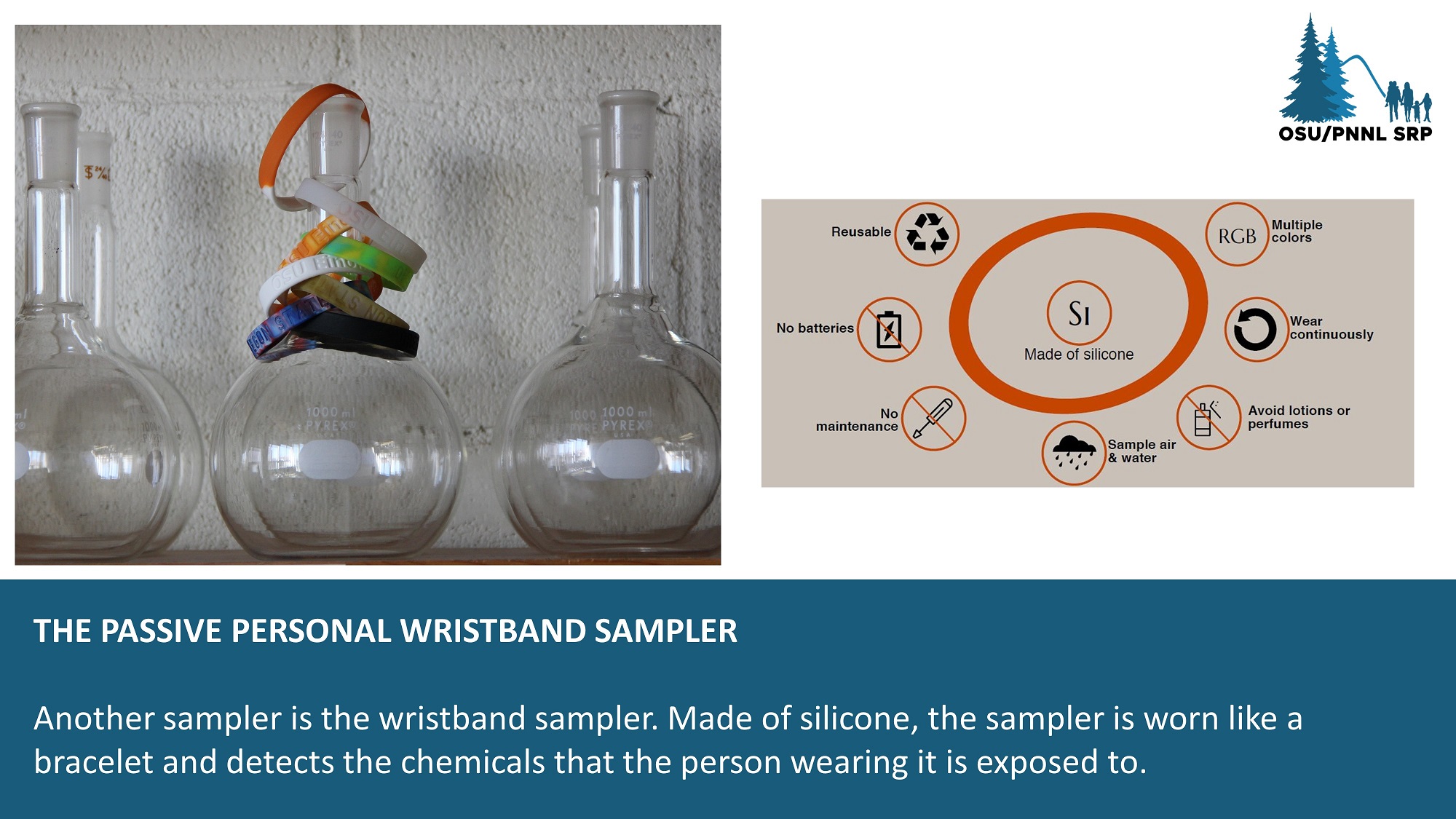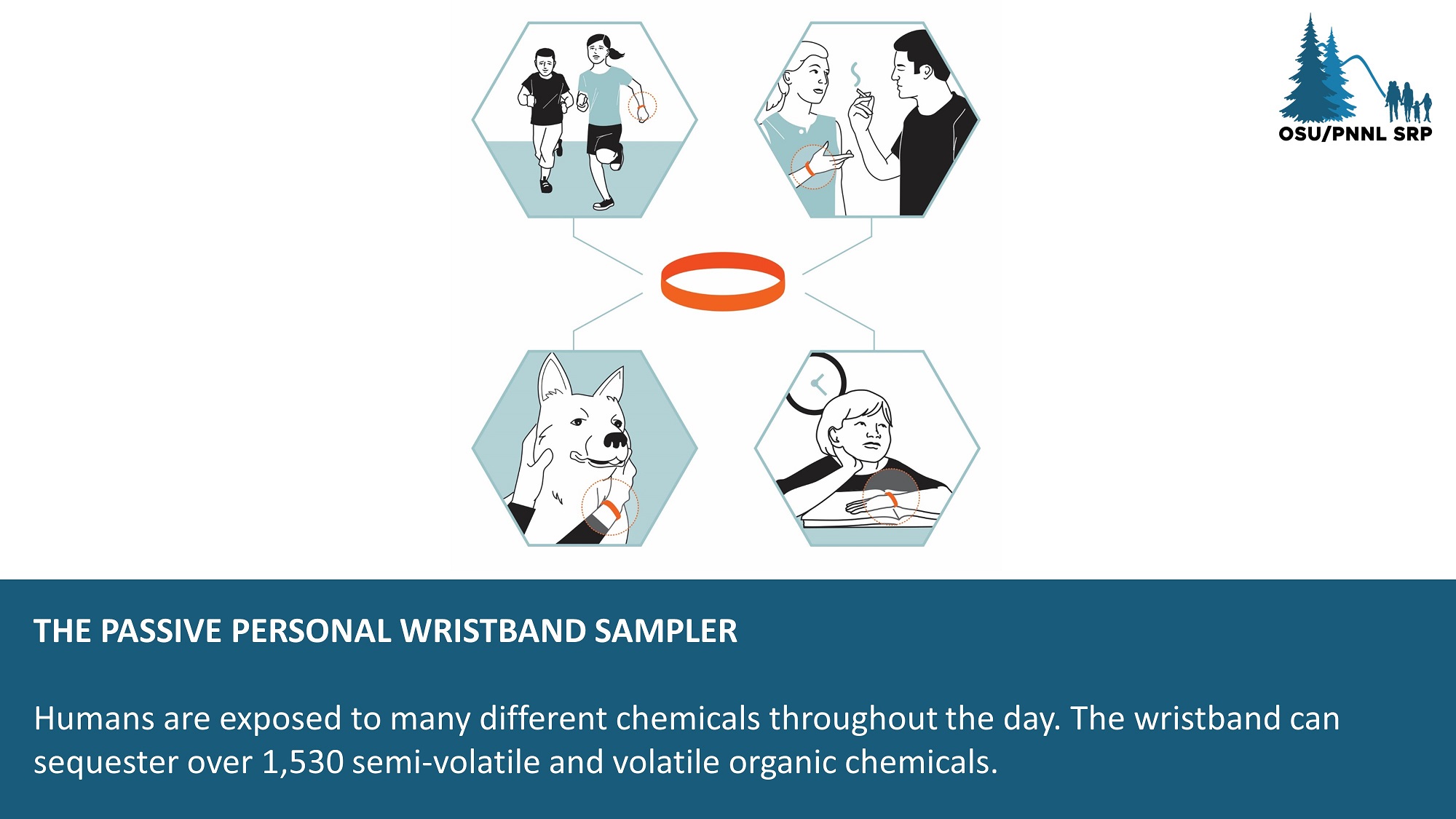Measuring environmental exposure to chemicals
Passive sampling devices (PSDs) mimic the way organic chemicals are absorbed into the body and enable researchers and their partners to conduct time-integrated evaluation of chemicals in the environment. In our Center's research, these devices have been used throughout the US to evaluate chemical contaminants in the environment near Superfund sites. Passive sampling devices can be used to evaluate environmental chemicals as well as personal exposure. Current methods in the Anderson Lab enable evaluation of over 1,530 semi-volatile and volatile organic chemicals.
PSDs can be used in a variety of configurations. Environmental samplers have been developed to allow evaluation of chemicals found in the air, water and sediment of a specific location over time. The Anderson research team also invented the use of passive sampling wristbands as the first low-cost approach to measure individual exposure to PAHs for people near Superfund sites. The personal samplers have also been adapted for use with pets and livestock. These samplers provide information on what a single individual is exposed to over time as they move through their environment.
The low cost and ease of use lead to high rates of participant compliance and thereby substantially increase the value of the collected data. The methods the laboratory has developed are helping site managers to assess the relative contributions of Superfund sites and other sources to people's personal exposures, and to identify nearby locations where people experience the highest external exposures to PAHs and may therefore experience the greatest risk.
